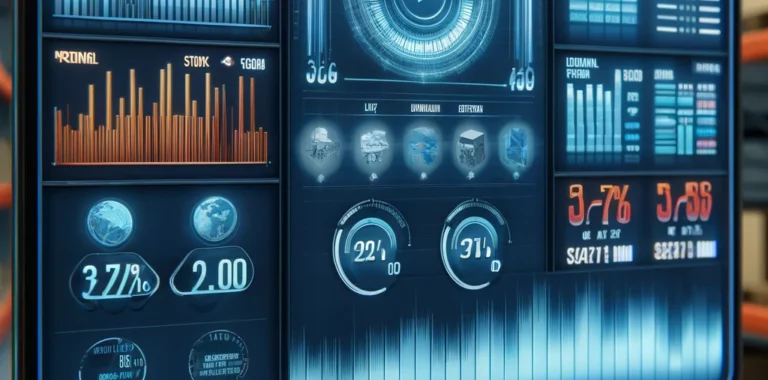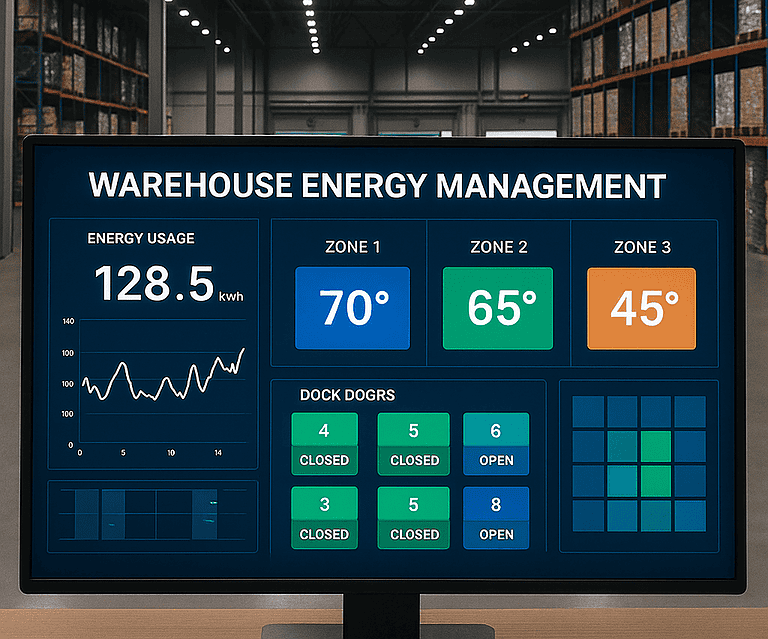5 Powerful Cross-Docking Strategies for Maximizing Efficiency
What if you could cut your warehouse storage costs by 50% while doubling your shipping speed? Welcome to the world of cross-docking strategies.

Introduction
In today’s fast-paced logistics landscape, efficiency is king. Enter cross-docking, a game-changing approach revolutionizing warehousing operations worldwide. But what exactly is cross-docking, and why should it matter to your business?
Cross-docking is a logistics practice where products from a supplier or manufacturing plant are distributed directly to a customer or retail chain with marginal to no handling or storage time.
Think of it as a well-choreographed dance of goods, moving seamlessly from inbound to outbound transportation with minimal pause.
The importance of cross-docking in modern warehousing cannot be overstated. As consumer demands for faster delivery times continue to rise and profit margins shrink, businesses turn to cross-docking strategies to stay competitive.
Cross-docking offers benefits, including cost savings, improved efficiency, and enhanced customer satisfaction, by reducing storage needs, minimizing handling, and accelerating the shipping process.
This post will explore five powerful cross-docking strategies that transform warehouses from mere stores into high-speed logistics hubs.
Whether you’re new to the concept or looking to optimize your existing operations, these insights will help you navigate the exciting world of cross-docking and propel your warehouse into the future of logistics.
The Fundamentals of Cross-Docking

Before we delve into specific strategies, it’s crucial to understand how cross-docking works and why it’s become such a pivotal part of modern warehousing.
How Cross-Docking Works
At its core, cross-docking is about speed and efficiency. Here’s a basic breakdown of the process:
Inbound trucks arrive at the cross-dock facility.
Products are unloaded and immediately sorted based on their final destination.
Items are moved directly to outbound trucks, often without touching the warehouse floor.
Outbound trucks depart, delivering products to their final destinations.
This streamlined cross-docking operation significantly enhances efficiency and automation, reducing products’ time in the warehouse, sometimes to less than 24 hours.
Types of Cross-Docking Services
There are several types of cross-docking, each suited to different business needs:
Continuous Cross-Docking: Products flow continuously from inbound to outbound trucks with minimal handling.
Consolidated Cross-Docking: Multiple smaller shipments are combined into larger ones for more efficient transportation.
Deconsolidation Cross-Docking: Large shipments are broken down into smaller ones for distribution to multiple destinations.
Pre-Distribution Cross-Docking: Goods are unloaded, sorted, and repackaged based on pre-established distribution instructions. The warehouse staff is aware of the end customer before the supplier ships the products, allowing for quick unloading, sorting, and repackaging upon arrival at the dock. This method best suits retailers with control over their warehouses and direct customer and supplier relations insights.
Post-Distribution Cross-Docking: Goods are stored temporarily in a cross-docking facility until customers are identified. This process allows sellers, distributors, and retailers to make informed decisions regarding shipping, inventory, sales forecasts, and trends to distribute goods more effectively.
Supply Chain Industries That Benefit Most
While cross-docking can be advantageous for many businesses, certain industries find it particularly beneficial:
Retail: For fast-moving consumer goods and seasonal items.
Automotive: To manage just-in-time inventory for manufacturing.
Food and Beverage: To ensure fresh products reach consumers quickly.
E-commerce: To meet demanding delivery timelines.
Understanding these fundamentals sets the stage for implementing effective cross-docking strategies.
Top 5 Cross-Docking Strategies

Now that we’ve covered the basics let’s explore the five most effective cross-docking strategies that can revolutionize your warehouse operations.
Strategy 1: Pre-distribution Sorting
Pre-distribution cross-docking involves organizing incoming goods based on their final destination before they reach the cross-docking facility. This strategy significantly reduces handling time at the warehouse.
Key benefits:
Minimizes time spent sorting at the facility
Reduces the risk of errors in distribution
Speeds up the overall cross-docking process
Implementation tip: Collaborate closely with suppliers to implement standardized labeling and sorting practices.
Strategy 2: JIT (Just-In-Time) Cross-Docking
JIT cross-docking aligns the arrival of inbound shipments with outbound transportation schedules. This strategy aims to minimize or eliminate storage time.
Key benefits:
Virtually eliminates warehouse storage needs
Reduces inventory holding costs
Improves product freshness (crucial for perishables)
Implementation tip: Invest in robust scheduling software and maintain excellent communication with suppliers and customers.
Strategy 3: Opportunistic Cross-Docking

This flexible strategy allows on-the-spot decisions about cross-docking or SG items based on current demand and capacity.
Key benefits:
Adapts to fluctuating demand
Maximizes warehouse space utilization
Balances efficiency with flexibility
Implementation tip: Implement real-time inventory management systems to make informed decisions quickly.
Strategy 4: Hybrid Cross-Docking
Hybrid cross-docking combines traditional warehousing with cross-docking operations. This strategy is particularly useful for businesses with a mix of fast-moving and slow-moving inventory.
Key benefits:
Optimizes handling for different types of products
Balances storage needs with quick turnaround times
Provides flexibility to adapt to market changes
Implementation tip: Designate areas for cross-docking and traditional storage, and train staff on the different handling procedures for each.
Strategy 5: Pool Distribution Cross-Docking
This strategy involves consolidating shipments from multiple suppliers at a cross-dock facility before distributing them to various retail locations.
Key benefits:
Reduces transportation costs
Improves delivery efficiency to multiple locations
Ideal for retailers with numerous stores in a region
Implementation tip: Coordinate closely with suppliers and carriers to optimize delivery schedules and routes.
Implementing these strategies can significantly enhance your warehouse’s efficiency and reduce operational costs.
Implementing Cross-Docking Facility

Transitioning to cross-docking or optimizing your existing cross-docking operations requires careful planning and execution. A distribution center serves as a central site for handling products with minimal storage space. Here’s how to get started:
Assessing Your Warehouse’s Suitability
Evaluate the current layout and flow of goods.
Ensure the facility has a distribution docking terminal with minimal storage space.
Assess the proximity to major transportation routes.
Determine the capacity for handling increased throughput.
Necessary Equipment and Technology
Investing in the right equipment and technology is crucial for efficient cross-docking operations. A distribution docking terminal is essential for efficient sorting and consolidation. Automated sorting systems, conveyor belts, and real-time tracking software can significantly enhance operational efficiency.
Assessing Your Warehouse’s Suitability
Before implementing cross-docking strategies, evaluate your warehouse’s readiness:
Layout: Ensure your facility has sufficient dock doors and a floor plan conducive to smooth product flow.
Location: Cross-docking works best when your warehouse is centrally located relative to suppliers and customers.
Product mix: Determine which products are best suited for cross-docking (typically fast-moving, stable-demand items).
Necessary Equipment and Technology
Successful cross-docking relies on the right tools:
Material handling equipment: Conveyors, forklifts, and pallet jacks for quick product movement.
Barcode scanners and RFID technology: For accurate and rapid product identification and tracking.
Warehouse Management System (WMS): To efficiently coordinate incoming and outgoing shipments.
Transportation Management System (TMS): This is used to optimize carrier selection and route planning.
Dock scheduling software: To manage truck arrivals and departures effectively.
Training Staff for Cross-Docking Operations
Your team is crucial to the success of your cross-docking strategy:
Provide comprehensive training on cross-docking procedures and best practices.
Emphasize the importance of speed and accuracy in handling products.
Train staff on using new technology and equipment.
Encourage a culture of continuous improvement and efficiency.
Measuring the Success of Your Cross-Docking

To ensure your cross-docking strategies are delivering results, you need to track key performance indicators (KPIs):
Key Performance Indicators (KPIs)
Dock-to-Stock Time: Measure how quickly products move from receiving to shipping.
Order Fulfillment Accuracy: Track the percentage of orders shipped without errors.
Inventory Turnover Rate: Monitor how quickly inventory moves through your facility.
Transportation Costs: Compare transportation expenses before and after implementing cross-docking.
Labor Productivity: Measure the number of units processed per labor hour.
Common Challenges and Solutions
Challenge: Coordinating inbound and outbound shipments.
Solution: Implement advanced scheduling software and maintain open communication with suppliers and carriers.
Challenge: Handling unexpected volume fluctuations
Solution: Develop contingency plans and maintain flexibility in your operations.
Challenge: Ensuring product quality during quick handling
Solution: Implement quality checkpoints and train staff on proper handling procedures.
The Future of Cross-Docking

As technology continues to evolve, so does the potential for cross-docking to become even more efficient and effective.
Emerging Technologies in Cross-Docking
Artificial Intelligence (AI) and Machine Learning: These technologies can predict demand patterns, optimize sorting processes, and improve decision-making in real time. They can also alleviate the worry of supply chain management by improving efficiency and decision-making.
Internet of Things (IoT): Connected devices can provide real-time tracking of products throughout the supply chain, enhancing visibility and coordination.
Autonomous Vehicles: Self-driving trucks and robotic forklifts could streamline the loading and unloading processes, reducing labor costs and improving safety.
Advanced Analytics: Big data analytics can help identify inefficiencies and opportunities for improvement in cross-docking operations.
Predictions for the Industry
Increased Adoption: As e-commerce grows, more businesses will turn to cross-docking to meet demands for faster delivery times.
Greater Customization: Cross-docking strategies will become more tailored to specific industry needs and individual business models.
Sustainability Focus: Cross-docking will play a crucial role in reducing the environmental impact of logistics operations by optimizing transportation and reducing storage needs.
Integration with Last-Mile Delivery: Cross-docking facilities may evolve to incorporate last-mile delivery operations, further streamlining the supply chain.
Want to learn more about optimizing your warehouse operations with cross-docking strategies? Contact us today!
Our experts can help you assess your facility’s potential for cross-docking and develop a tailored implementation plan.





